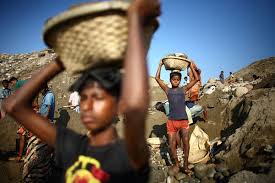PATNA: Bihar may have several schemes that favour Dalits, but the stark fact is that the rate of crimes against scheduled castes by others is an alarming 47.6, second only to Rajasthan with a rate of 65.7, according to the latest figures released by the National Crime Records Bureau.
Crimes against India’s poorest communities are on the rise. In 2014, Crimes against Scheduled castes by non-scheduled castes were 47,064, and crimes against tribals by non-tribals were 11,451.
Rajasthan topped the list with 8,028 cases of crime against SC ( rate 65.7 ), followed by Bihar with 7893 cases (rate 47.6 ). Bihar contributed 16.8 percent to the national crime total in this category, and Rajasthan 17.1 percent.
Politicians and newspapers may try to put a political spin on it, but the fact remains that more and more Dalits are becoming the victims of violent crimes according to statistics put out by National Crime Records Bureau (NCRB).
National figures indicate rising caste issues
Crimes against Scheduled Castes rose almost steadily to 47,064 in 2014 from 39,408 in 2013 (19%), 33,655 in 2012 (17%), 33,719 in 2011, 32,712 in 2010 and 33,594 in 2009.
The rate of crimes against Dalits surpassed the national average in as many as 10 states both in 2014 (23.4 per lakh of their population), and 2013 (19.57). Rate of crime against Scheduled Castes means number of crimes reported against SCs per 100,000 of their population.
In 2014 , 744 Dalits were murdered, up from 676 in 2013, 651 in 2012, 673 in 2011, 570 in 2010 and 624 in 2009.
Rape of Dalit women stood at 2,233 in 2014, up from 2,073 in 2013, 1,576 in 2012, 1,557 in 2011, 1,349 in 2010 and 1,346 in 2009. Kidnappings and abductions too went up, barring in 2012 which saw a marginal decline. Against 755 kidnappings/abductions in 2014, there were 628 in 2013, 490 in 2012, 616 in 2011, 511 in 2010 and 512 in 2009.
The crime-head ‘hurt’ showed 4,901 cases in 2013, 3,855 in 2012, 4,247 in 2011, 4,376 in 2010 and 4,410 in 2009.
[Prepared by Vivek and Newsnet Desk from media reports and NCRB data]


